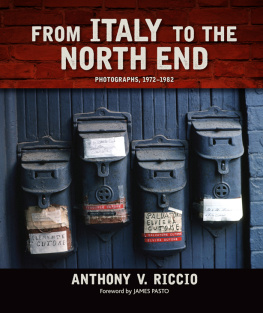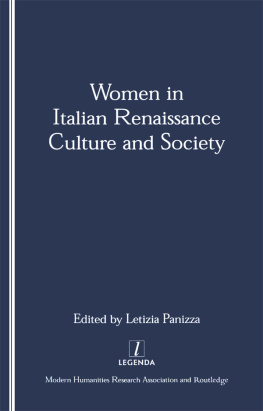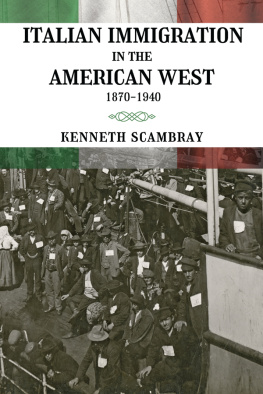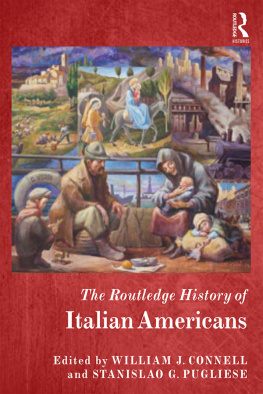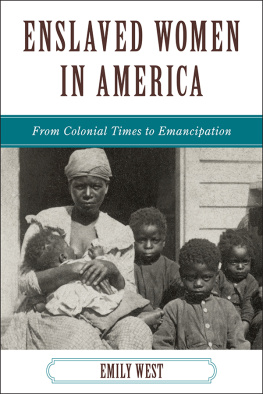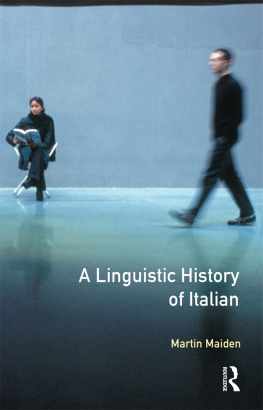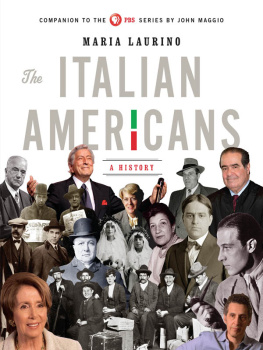Farms, Factories, and FamiliesPasquale and Anna Perrotti on the Perrotti farm, Woodbridge, Connecticut, mid-1930s. Caccavalle family archives.
Farms, Factories, and Families
Italian American Women of Connecticut
Anthony V. Riccio
Foreword by
Mary Ann McDonald Carolan
Author photo Robert Carlo
Published by State University of New York Press, Albany
2014 Anthony V. Riccio
All rights reserved
Printed in the United States of America
No part of this book may be used or reproduced in any manner whatsoever without written permission. No part of this book may be stored in a retrieval system or transmitted in any form or by any means including electronic, electrostatic, magnetic tape, mechanical, photocopying, recording, or otherwise without the prior permission in writing of the publisher.
Excelsior Editions is an imprint of State University of New York Press
For information, contact State University of New York Press, Albany, NY
www.sunypress.edu
Production by Jenn Bennett
Marketing by Fran Keneston
Library of Congress Cataloging-in-Publication Data
Riccio, Anthony V.
Farms, factories, and families : Italian American women of Connecticut / Anthony V. Riccio.
pages cm
Includes bibliographical references and index.
ISBN 978-1-4384-5231-9 (hardcover : alk. paper)
1. Italian American womenConnecticutHistory. 2. Italian American womenConnecticutBiography. 3. Italian American familiesConnecticutHistory. 4. Italian AmericansConnecticutHistory. 5. WomenConnecticutHistory. 6. ConnecticutSocial conditions20th century. I. Title.
F105.I8R53 2014
920.009251dc23
[B]
2013029956
10 9 8 7 6 5 4 3 2 1
To the many women, Italian and non-Italian, who helped me along my way.Contents
CHAPTER ONE
The Historical Roots of Southern Italian Women
CHAPTER TWO
Italian Women Journey to America
CHAPTER THREE
Italian Pioneer Women: A New Life in Connecticut
CHAPTER FOUR
From Italy to Connecticut: The Sewing Tradition
CHAPTER FIVE
Midwives and Giving Birth
CHAPTER SIX
Going to School
CHAPTER SEVEN
Betrothal and Marriage
CHAPTER EIGHT
Italian American Farming Women
CHAPTER NINE
Italian American Women Join the Production Lines
CHAPTER TEN
Italian American Women Raise Their Voices: Empowerment in the Union Movement
CHAPTER ELEVEN
Women in Italy during WWII
CHAPTER TWELVE
While the Boys Were Gone: Italian American Women in Connecticut during WWII
CHAPTER THIRTEEN
Italian American Women Entrepreneurs: Businesses, Mutual Benefit Societies, and Charities
CHAPTER FOURTEEN
Italian American Womens Success Stories: Education and Careers
CHAPTER FIFTEEN
Finding Her Voice: Italian American Womens Narratives
List of Illustrations
Frontispiece
Pasquale and Anna Perrotti on the Perrotti farm, Woodbridge, Connecticut, mid-1930s. Caccavalle family archives.
Foreword
With Farms, Factories, and Families: Italian American Women of Connecticut, Anthony Riccio has assembled a rich array of stories about the transition from the old world to the new, Italy to America. This expansive volume offers new insights into the Italian American experience as it focuses on stories about women in Connecticut. Continuing in the genre of his two earlier volumes on Boston and New Haven, Riccio offers the reader oral histories, mainly from a female perspective, with contributions from men about their grandmothers, mothers, aunts, or sisters. Markedly different from the official history of textbooks, this collection of conversations, now preserved in written form, gives voice to individual subjects stories. The authenticity and detail of these inspiring and arresting accounts convey both the joy and pain of female immigrants lives.
By concentrating on Italian American women, Riccio has broadened our understanding of an ethnic community whose history has been described mostly from a male vantage point. Social historians note that the first wave of migration from Italy to the United States in the late nineteenth and early twentieth centuries was primarily a male phenomenon. Previous studies by Italian-born Baptist minister Antonio Mangano (Sons of Italy: A Social and Religious Study of Italians in America [1917]) and sociologist Michael La Sorte (La Merica: Images of Italian Greenhorn Experiences [1985]) have centered mostly on the lives of men. Miriam Cohen, on the other hand, chronicled the working lives of Italian American females in Workshop to Office: Two Generations of Italian American Women in New York, 19001950 (1993). Riccios text adds nuance and complexity to the story of the Italian American experience by focusing on the more personal and private aspects of womens employment and domestic lives.
In the first half of the twentieth century, Italian American women, like their male counterparts, were born into a life of work. From a very young age, they were expected to assist in the house and on the farm; if necessary, they would leave school to help support the typically large family. Nonetheless, their accounts of unending chores before and after school and grueling jobs in sweatshops and factories are often punctuated by laughter. Like their mothers and grandmothers before them, these women toiled from dawn to dusk with hardly a complaint. Riccios fearless subjects tell matter-of-factly of cutting heads off chickens, chopping wood, hefting fifty-pound bags of vegetables onto trucks, or operating dangerous machinery on the factory floor.
Life on Connecticuts farms was far from idyllic, as these stories illustrate. From the early age of four or five, girls helped out by doing chores. Adolescents worked in the fields before school and returned there at the end of the day. Women gave birth and were back tending crops shortly afterward. Throughout the year, there was always plenty to be done, whether drying seeds in preparation for the next years crop, planting and then protecting hot beds against the elements in the winter, harvesting fruits and vegetables, and bringing them to market or canning them for later use. These stories give the reader a new appreciation for the demanding physical work associated with farming as well as for the critical financial decisions necessary for successful land management. Those interested in issues of sustainability and organic farming today will find a wealth of information in Riccios subjects precise accounts of their work on the farm.


